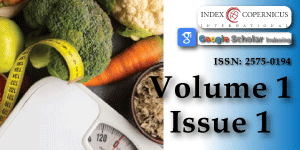Effect of drying methods on the physicochemical properties and Fatty Acid composition of Moringa Seeds Oil
Main Article Content
Abstract
Effect of drying methods (sun-drying and cabinet oven drying) on the physicochemical properties and fatty acid composition of oils extracted from moringa seeds was investigated. Oil from the seeds was extracted using solvent (hexane) after drying. Drying increased the yield from 30.30-33.11%. The oil samples were less dense than water with specific gravities of 0.9032, 0.9075 and 0.9030 respectively. A significant difference exists in the moisture contents (0.11-0.21%); smoke point (202-2250C), flash point (310-3170C) and fire point (360-3690C). Sun-drying and cabinet oven drying brought about a decrease in the acid value (1.80-1.08mgKOH/g), saponification value (174.87-105mgKOH/g), Iodine value (16.10-13.90wijs) and peroxide value (11.24-2.3-Meq/kg). The decrease is an indication of quality improvement of the oils. More unsaturated fatty acids were present in the samples between 76.61% and 81.66%. Oleic acid was predominant (44.92% raw, 45.71% sundried and 43.60% cabinet oven dried). Sun-drying and cabinet oven drying did not have much significant effect on the physical, chemical and fatty acid compositions of the oil. The results obtained from this study showed that the three oil samples are good as edible oil and for commercial purpose.
Article Details
Copyright (c) 2017 Omosuli SV, et al.

This work is licensed under a Creative Commons Attribution 4.0 International License.
Sharma P, Kumari P, Srivastava MM, Srivasta S. Removal of cadmium from aqueous system by shelled Moringa oleifera Lam. seed powder. Bioresour Technol. 2006; 97: 299-305. Ref.: https://goo.gl/mcFWbi
Fahey JW. Moringa oleifera: A Review of the Medical Evidence for its Nutritional, Therapeutic and Prophylactic Properties. In Tree for Life J. 2005; 1: 5. Ref.: https://goo.gl/YqwB1e
Ayotunde EO, Fagbenro OA, Adebanjyo OT. Toxicity of Aqueous Extract of Moringa oleifera Seed Powder to Nile Tilapia (creochronisniloticus) Fingerlings. Int Res J Agricul Sci. 2011; 142-150. Ref.: https://goo.gl/eJK689
Mahmood KT, Mugai T, Ikram Ul Haq. Moringa oleifera: A Natural Gift. A Review. J phar Sci. Res. 2010; 2: 277-781. Ref.: https://goo.gl/niW6pz
Burkill JH. A Dictionary of Economic Product of the Malay Peninsula. 2006. Ref.: https://goo.gl/kQV7iZ
Nikkon F, Saud ZA, Rahman MH, Hadque E. In vitro Antimicrobial Activity of the Compound Isolated from Chloroform Extract of Moringa oleifera. Lam. Pak J Bio Sci. 2003; 6: 1888-1890. Ref.: https://goo.gl/Q4hLD3
Somli AT. Chemistry, Technology and Utilization van no streanreihold. New York. 557: 135-148.
Corbett HT. Specific Gravities for Acetone, Alcohol, Turpentine, Oil and More Engineering. The Engg Toolbox. 2005. Ref.: https://goo.gl/mxxLQm
Sutherland ER, Gregor JT, Fords MK. Miracle tree. Kos Health Publications.
Official methods analysis 17th (Ed). Association of Official Analytical Chemists, Maryland CH. 2000; 2: 112-120. Ref.: https://goo.gl/WENPAQ
Ibitoye AA. Laboratory Manual on Basic Methods in Plant Analysis, 1st (ED) concept IT & Educational Consults. 2005; 17-25.
Anwer F, Zafar SN, Rashid U. Characterization of Moringa oleifera seed oil from drought and irrigated regions of Punjab, Pakistan. Grasas y Aceites. 2006; 57: 160-168. Ref.: https://goo.gl/5X5gCh
Elert G. Density of Cooking, In Physics Factbook, Online. 2000. Ref.: https://goo.gl/TRkBCv
Toolbox. Specific Gravities for Some Common Fluids and Liquids as Acetone, Alcohol, Turpentine, Oil and More. Engg Toolbox. 2005. Ref.: https://goo.gl/s3HMfy
Weiss TJ. Food Arils and their Uses 4th Edition AVI Publishing Company. 1980; 135-137.
Giwa N. Waste Oil Management and Environment, a report by Chairman Raw Material Research and Development Council in News Watch Magazine. 1992.
Omosuli SV, Olalumade BB, Orungbemi OO, Ajigbo IO. Pysico-chemical Qualities of Oils Extracted from two Melon Seed Varieties. J. Science. 2: 157-159.
Aluyor E. O and, Aluyor P and Ozigagu C. E. Effect of Refining on the Quality and Composition of groundnut oil. Africa j food sci. 2009; 3: 201-205. Ref.: https://goo.gl/4yn3H9
Onwuka GI. Physicochemical, Nutritional and Functional Properties of the Epicarp, Flesh and Pitted Sample of Doum Fruit (Hyphaene Thebaica). 2005; 2: 92-93. Ref.: https://goo.gl/ozNRaz
Codex Alimentarius Commission. Recommended Internal Standard Commission, Edible Fat and Oils. 1982. Ref.: https://goo.gl/ADBFE3
Anwar F, Rashid U. Physiocochemical Characteristics of Moringa oleifera Seeds and Seed Oil from a Wild Provence of Pakistan. Journal of Botany. 2007; 39: 1443-1453. Ref.: https://goo.gl/pjw38p
FAO/WHO. Fats and Oil and Related Products, Food Standard Program. Codex Alimentarius Commission. Food and Agriculture Organization of United Nations. 2001; 33-35. Ref.: https://goo.gl/JWJB7P
Bello MO, Farade OS, Adewusi SRA, Olawore NO. Studies of some lesser known Nigeria Fruits. African J Biotechnol. 2008; 7: 3979-3979. Ref.: https://goo.gl/eo2yww
Lalas, S and Tsakins, J. Characterizations of Moringa oleifera Seed Oil variety “periyakulami” Journal of Food Composition and Analysis. 2002; 15: 65-77. Ref.: https://goo.gl/t4DmFp
Falola AO, Adesola SO, Aremu TO. Extraction and Evaluation of Oil from Almond Seed (Terminarlia catappa). Proceeding of the Annual Conference of NigeriaInstitute of Food Science Technology held in Ogbomosho. 2008.
Aremu MO, Olanisakin A, Bako DA, Madu P. C (2006) Compositional Studies and Physiocochemical Characteristics of Cashew Nut (Anarcadia Loccidentale) Flour. Pakistan J Nutri. 2006; 5: 328-333. Ref.: https://goo.gl/NGUf5M
Sofowora A. Medicinal Plants and Traditional Medicines in Africa. Wiley and Sons, New York. 1993; 34-36. Ref.: https://goo.gl/2PcQ4X
Cheeke PR. Nutritional and Physiological Implication of Saponins: A Review. Can J Sci. 1971; 51: 621-632. Ref.: https://goo.gl/1byZWb
Anwar F, Bhanger J. Laboratory Manual Basic Methods in Plant. Analysis. 1st Edition. 17-25.
Fuglier LJ. The Miracle Tree: Moringa Oleifera, Natural Nutrient for the Tropics. 1999; 68. Ref.: https://goo.gl/Xo7CMK





